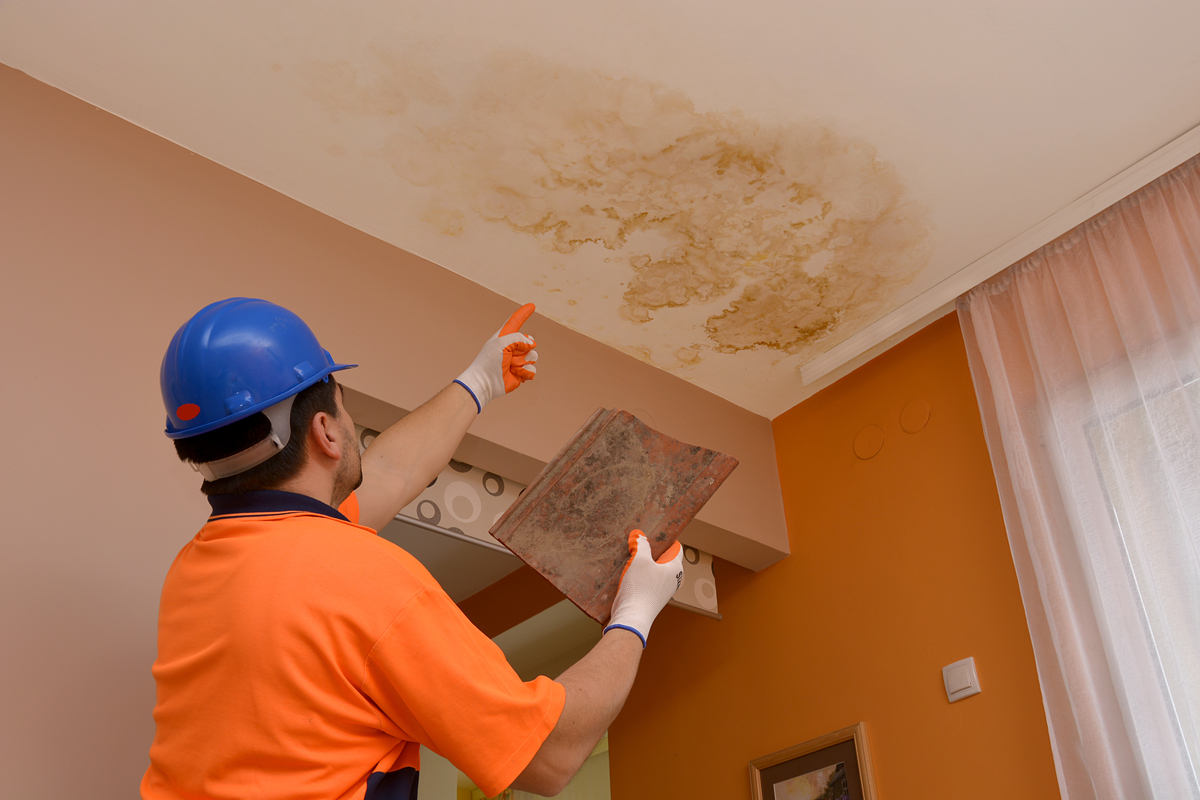6 Most Common Sources of Water Leaks in Your Home: How to Identify and Address Them
6 Most Common Sources of Water Leaks in Your Home: How to Identify and Address Them
Blog Article
What're your opinions on How to Find Water Leaks?
/GettyImages-957479686-f3d2e677f2e749fc98aa207b474c5c1f.jpg)
Leakages not only trigger waste of water but can additionally create unnecessary damages to your house and promote undesirable natural development. By comprehending and looking for day-to-day circumstances that cause leakages, you can safeguard your home from future leakages as well as unnecessary damages.
Elbowing in origins
The majority of water leaks start outside the house as opposed to inside it. If you see an unexpected decline in water pressure, claim in your tap, require time to go out and analyze your yard. You could discover damp patches or sinkholes in your backyard, which could indicate that tree origins are getting into water lines causing water to permeate out. You can have your plumber look for intrusion, especially if you have trees or hedges near your home.
Corroded water systems
As time goes by, your plumbing system ages and also corrosion such as corrosion may begin eating away the pipelines. This could be the cause of discoloration or warping on your pipes. This calls for an evaluation with your plumber promptly. If our plumbing system is old, think about replacing the pipelines since they are at a greater risk of rust than the more recent designs.
Defective Pipeline Joints
The factor at which your pipes link is often the weakest link in the waterline. Pipe joints can degrade over time, leading to water leaks. Regrettably, the majority of pipe joints are not quickly noticeable. If you have loud pipelines that make ticking or banging noises, especially when the warm water is turned on, your pipe joints are most likely under a lot of stress. It is suggested to have your plumber evaluate your system annually.
Immediate temperature adjustments.
Extreme temperature level modifications in our pipes can create them to broaden and get suddenly. This expansion and tightening may create fractures in the pipes, particularly if the temperature are below cold.
Poor Water Connectors
At times, a leakage can be triggered by loosened hose pipes and also pipes that provide your devices. More often than not, changing is what triggers the loosened water Links. You could locate when it comes to a washing equipment, a hose pipe might spring a leak as a result of trembling during the spin cycle. In case of a water links leak, you might notice water running straight from the supply line or pools around your home appliances.
Obstructed Drains
Blocked drains pipes might be aggravating and inconveniencing, however they can occasionally end up triggering an overflow resulting in rupture pipelines. Keep removing any type of products that might decrease your drains pipes that could block them to stay clear of such inconveniences.
All the above are sources of leakages however not all water leakages result from plumbing leakages; some leakages might come from roof covering leaks. All leaks ought to be fixed quickly to avoid water damage.
Leakages not just create waste of water but can also trigger unneeded damages to your home as well as advertise undesirable organic growth. By looking and comprehending for daily circumstances that trigger leakages, you can shield your residence from future leakages and unnecessary damage. Today, we will look at six leak causes that may be triggering your pipes to leak.
At times, a leak can be triggered by loose hose pipes as well as pipes that provide your appliances. In case of a water connections leakage, you might see water running straight from the supply line or pools around your devices.
How To Check For Water Leak In Your Home
How To Check for Leaks
The average household's leaks can account for nearly 10,000 gallons of water wasted every year and ten percent of homes have leaks that waste 90 gallons or more per day. Common types of leaks found in the home are worn toilet flappers, dripping faucets, and other leaking valves. These types of leaks are often easy to fix, requiring only a few tools and hardware that can pay for themselves in water savings. Fixing easily corrected household water leaks can save homeowners about 10 percent on their water bills.
To check for leaks in your home, you first need to determine whether you're wasting water and then identify the source of the leak. Here are some tips for finding leaks:
Take a look at your water usage during a colder month, such as January or February. If a family of four exceeds 12,000 gallons per month, there are serious leaks.
Check your water meter before and after a two-hour period when no water is being used. If the meter changes at all, you probably have a leak.
Identify toilet leaks by placing a drop of food coloring in the toilet tank. If any color shows up in the bowl after 10 minutes, you have a leak. (Be sure to flush immediately after the experiment to avoid staining the tank.)
Examine faucet gaskets and pipe fittings for any water on the outside of the pipe to check for surface leaks.
Undetected water leaks can happen without the home or business owner even realizing. If you suspect a water leak, but not able to find the source. It is time to contact a professional water leak detection service, The Leak Doctor.
How To Find a Water Leak In Your Home
https://www.leakdoctor.com/blog/How-To-Check-For-Water-Leak-In-Your-Home_AE197.html

As a reader on Common Water Leaks In House, I imagined sharing that post was necessary. Sharing is nice. Helping people is fun. I enjoy reading our article about How to Find Water Leaks.
Call Today Report this page